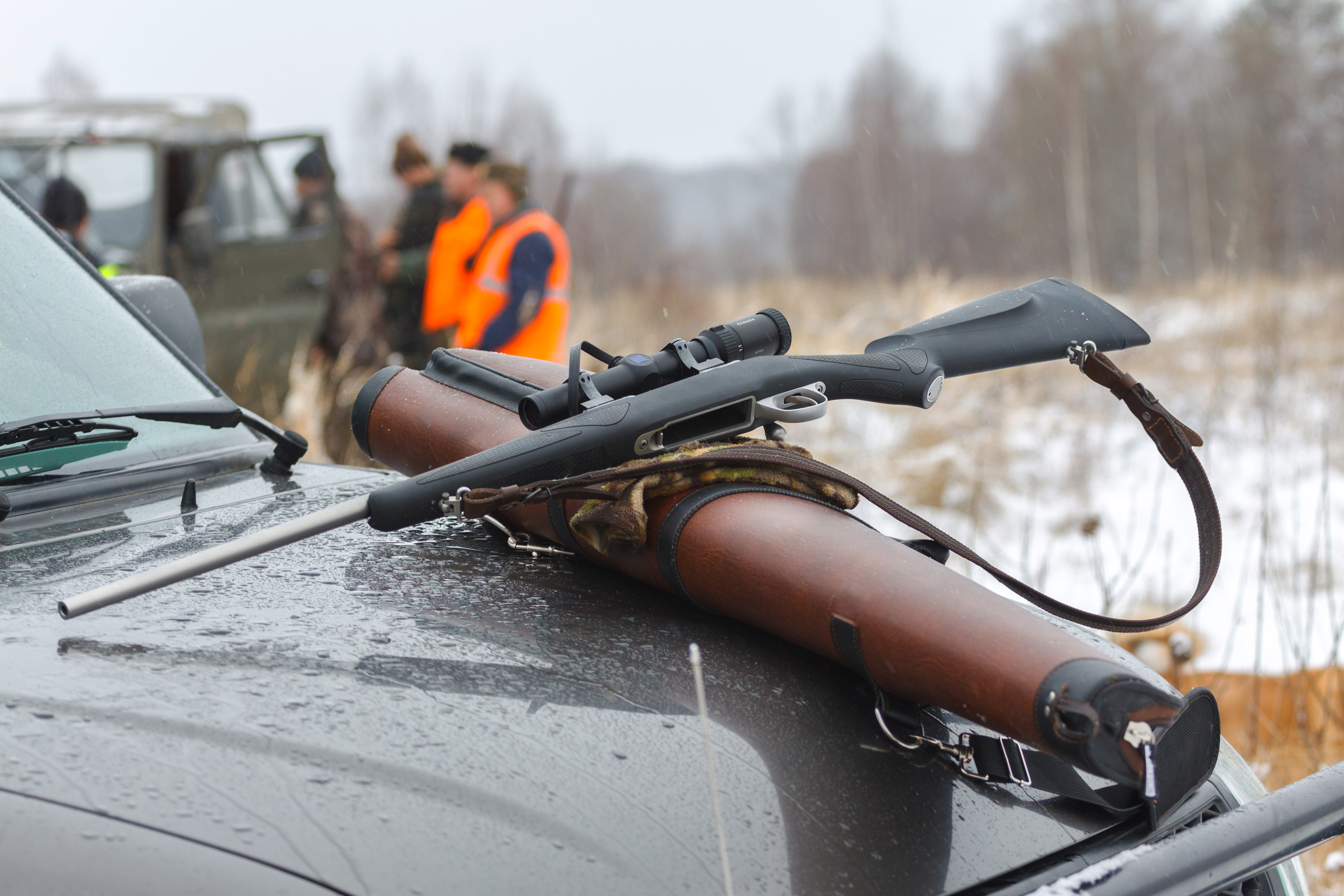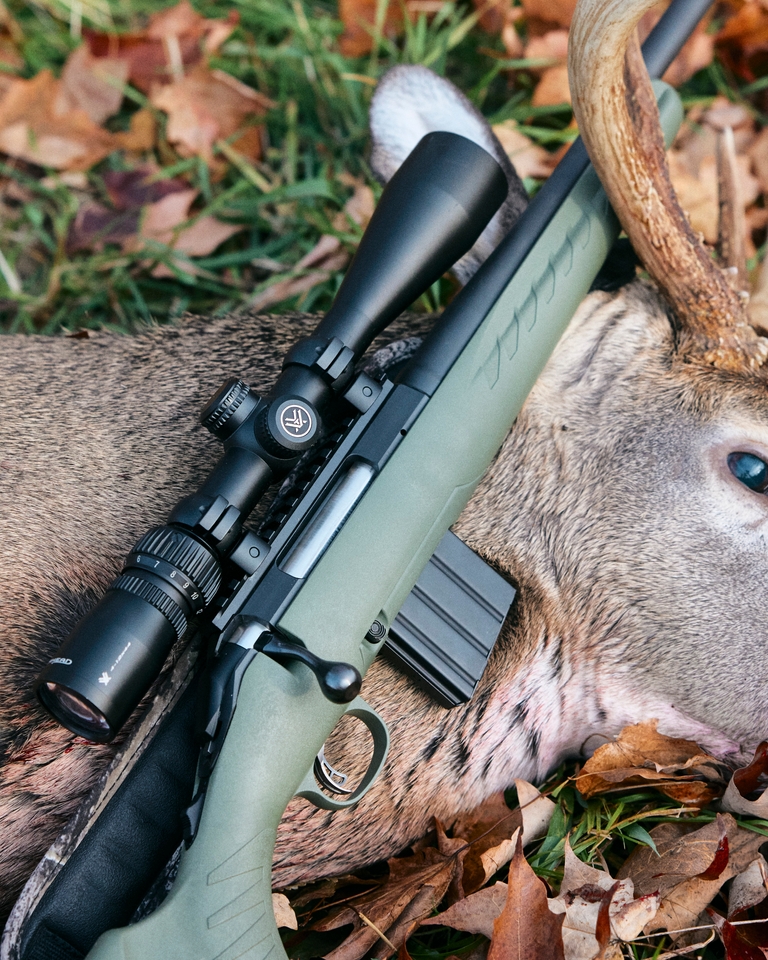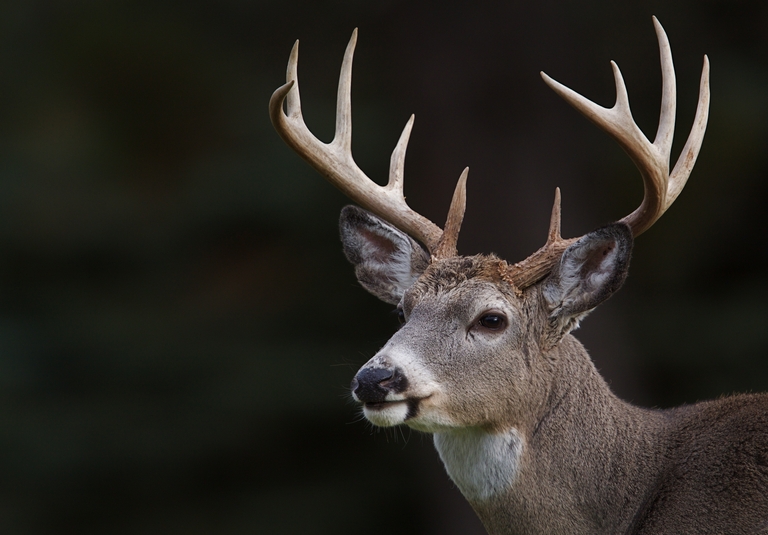How to Sight In a Rifle (and Why)

You're preparing for deer season and getting excited about your upcoming hunt. You dust off your rifle and head to your local range for some warm-up target practice.
You sight the target downrange, confident in your bull's eye, pull the trigger, and your shot is off. What's up?
You need to sight-in your rifle – but what does that mean, and how do you do it? We've talked about staying safe after the shot, but first, hunters must prepare to hit a target successfully! So, before taking the field for your upcoming hunt, read this article to learn how to sight in your rifle (and why it's important)!
The Flight of a Bullet
Bullets don't travel in a straight line; they arc. Even though everything might indicate you're pointing directly at a buck for a clean kill shot, your bullet won't fly straight after you pull the trigger.
Because of gravity's effects, you need to "sight in" or adjust your sights to hit a target at a specific range. A properly sighted-in rifle adjusts for gravity to help you aim true and hit your target.

How to Sight-In Your Rifle
As a deer hunter, consider sighting your rifle to a target about 100 yards away. That's a good rule of thumb, though you may need to sight in your rifle at a different range depending on where you hunt.
To sight in your rifle, follow these steps:
- Set up on a solid bench rest with the forestock resting on something padded, such as a sandbag. (Don't rest the gun on its barrel, or it will shoot higher than usual!)
- Use a sight in target, available from retail outlets or manufacturers.
- Start by setting a target 25 yards away; fire at least three shots, then check the results. If the holes are grouped relatively close together – but not where you were aiming – your sights need to be adjusted.
- Adjust the sights. Read your sight's instruction manual to determine how much a certain number of minutes-of-angle or "clicks" in a specific direction will change your firearm's rear sight (peep or telescopic). Consult a ballistics chart or an experienced shooter if you need additional help.
- Repeat at 100 yards (or whatever your target range is).
Sighting in your rifle before heading out for your hunt helps give you a better chance of hitting your target with an accurate shot.
Sighting In Has Many Benefits
Sighting in your rifle delivers more benefits than just an accurate sight. Making this process part of your pre-hunt preparation each season also helps you in the following ways.
Extra Practice
Because you have to shoot your target several times while sighting in, you get more hands-on time with your rifle, making you a better shot.
Depending on how often you hunt and transport your firearm, your sight can get bumped frequently throughout the year. Sighting in before every hunt gives you more opportunities to practice your shot.
Added Accuracy
When you're on the hunt, you want to hit your deer exactly right. Being out of alignment may mean the difference between a perfect hit in the heart and a meat-ruining hit in the stomach.
If you want to enjoy venison stew and remain an ethical hunter, your rifle must be as accurate as possible.
Identifying Weak Points
If you have a little trouble with your grip or stance, extra time at the local range with experts can help you identify and correct these problems, making your next hunt much better.
If you're still learning to hunt and use your firearm, take your time at the range when sighting your rifle to take more shots and improve your weaknesses.
Understand Your Range
After the practice and repetition of sighting in your rifle, you will know your range like the back of your hand. This means you'll know exactly when a deer has crossed into your firing range for an excellent shot.
Improved Safety
Because your firearm is more accurate, you now know exactly where your bullet will travel, which means you can reduce the chances of an accident.
Safety is one of the best benefits of consistently sighting your rifle before a hunt.
More Confidence
You have a perfectly sighted-in rifle and a ton of practice! Your hunt will be outstanding as you confidently take clean shots and tag out.

Sighting In + A Hunter Safety Course = A Successful Hunt
In addition to sighting your rifle, taking a hunter safety course helps you have a successful hunt! Proper preparation before entering the field with your hunting partners or nearby hunters keeps everyone safe and improves your chances of tagging out.
So, as you go through the sight in process and plan your next hunt, make sure you have your hunter safety certification. Most states require it before you can purchase your hunting license, and Hunter-Ed makes it easy to find and complete your course and exam online.
We also encourage your hunting partners, friends, and family to get certified if they plan to join you in the field! Find the course for your state and start learning for free with our online study guide.
Originally published October 23, 2015. Content updated October 2, 2023.


